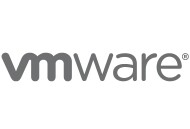The services and information governments provide are crucial to keeping society running and enabling people to live their lives to the fullest. Everything from their ability to lodge a tax return correctly to receiving timely alerts during a national crisis hinges on governments having the right technology in place to deliver services quickly, securely, and in a way that’s user-friendly. A recent survey by VMware and Vanson Bourne found that when it comes to digital transformation, one-third of government respondents across APAC rank improving the customer experience among their top three priorities.
As technology is a key driver for shaping the user experience, governments need to embrace modern applications to be able to keep up with today’s digital society. But while that’s a goal of many governments, they are being held back by monolithic legacy systems that are not compatible with the growing ecosystem of cloud technologies. This creates a huge number of challenges for IT departments, including high operational costs that eat up IT budgets, difficulty hiring and retaining resources to maintain old systems, and increased security risks.
There are three key things that governments looking to embark on or accelerate their software development initiatives should do:
- Take a user-centric approach
- Embrace agility
- Modernize collaboratively
Take a user-centric approach
Unlike private sector services such as banking or retail, people don’t have a choice as to the government departments they engage with. They also look to governments for clear communication and leadership and, as a result, expect a certain level of simplicity and efficiency with each interaction.
When it comes to designing, building, and delivering the modern applications that underpin such interactions, it’s important that developers take a user-centric approach, putting themselves in the shoes of those using the service to determine the usability of the platform and ensure it makes sense for everyone—from the tech-savvy Gen Z to pre-internet generations.
VMware recently partnered with Service NSW, in Australia, to build a unified mobile application for citizens to access their driver’s licenses digitally, as well as receive health notifications and check into venues as part of the COVID-19 contact tracing process. As reported in The Australian, the app has recorded more than 60 million check-ins so far, about 2.4 million daily, and has been downloaded 3.6 million times.
Trust and transparency are also incredibly important when it comes to government-citizen relations. Governments that don’t prioritize these principles risk their citizens losing confidence in their ability to effectively serve the country, so developers need to make sure they are carried through the entire application modernization process. That means adhering to data sovereignty and compliance regulations as well as cybersecurity frameworks, such as the Australian Signals Directorate’s Essential Eight.
An example of this in practice in Australia is the Digital Transformation Agency releasing the source code for its COVIDSafe application to encourage feedback from the public. Meanwhile, the South Korean government enabled developers to create mobile applications that tracked the spread of COVID-19 across Asia Pacific by making health statistics available. Actions like these not only drive greater trust amongst citizens, but yield better results through collaboration.
Embrace agility
Over the past year, governments have been faced with navigating not just a global pandemic but earthquakes, bushfires, civil protests, and more. Taken together, these experiences have taught us that situations can change in an instant, and that in order to deliver the best user experiences, governments need to have the infrastructure in place to scale business-critical apps, push updates, and respond to feedback in real time.
Achieving all of this requires governments to embrace an agile approach that is reflected by the people, processes, and the technology they put in place. It will allow governments to quickly innovate, react to feedback, and scale their services in times of disruption.
In Singapore, for example, the country’s government, known to be one of the most digitally-savvy in the world, is on a five-year cloud migration journey to develop faster, higher-quality applications. Taking this agile approach has also enabled it to build services to navigate crises including COVID-19 and rapidly developing public applications such as TraceTogether and SafeEntry.
When putting agile into practice, it’s important for teams to find ways to observe how applications are performing and how end users are experiencing the system, then use those insights to inform the direction and roadmap of the application. Doing this continuously will shorten the feedback cycle and help governments innovate faster.
Putting the right people in the right places is also critical to driving agility. VMware found that 88 percent of organizations with software-minded leaders are more successful, proving there’s a huge benefit to having champions who embrace and advocate for technologies and processes—such as DevOps, microservices, and containers—that propel app modernization forward.
Modernize collaboratively
When it comes to building modern applications and transforming existing ones that can scale effortlessly through the cloud, success is only possible if a holistic approach that incorporates people, processes, and technology is utilized.
The reality for governments is that they don’t have an endless source of financial and human resources to tap into, so they need to make sure they focus on the big picture and that they don’t create “islands of innovation.” Instead, they should take a step back to determine both what agility means for them in general as an organization and where bottlenecks might exist so they can overcome them accordingly. Often, it’s not just end users leveraging these applications but other public sector agencies as well, so it’s important to collaborate and make technology decisions that will contribute to the greater good.
People’s expectations are changing. Government agencies, partnering with VMware Tanzu, are modernizing software development to provide engaging digital services to their citizens and enable their workforces to drive mission effectiveness—all while keeping applications and data safe.
Start tackling your application modernization challenges today with the VMware Tanzu Labs Discovery Workshop.









